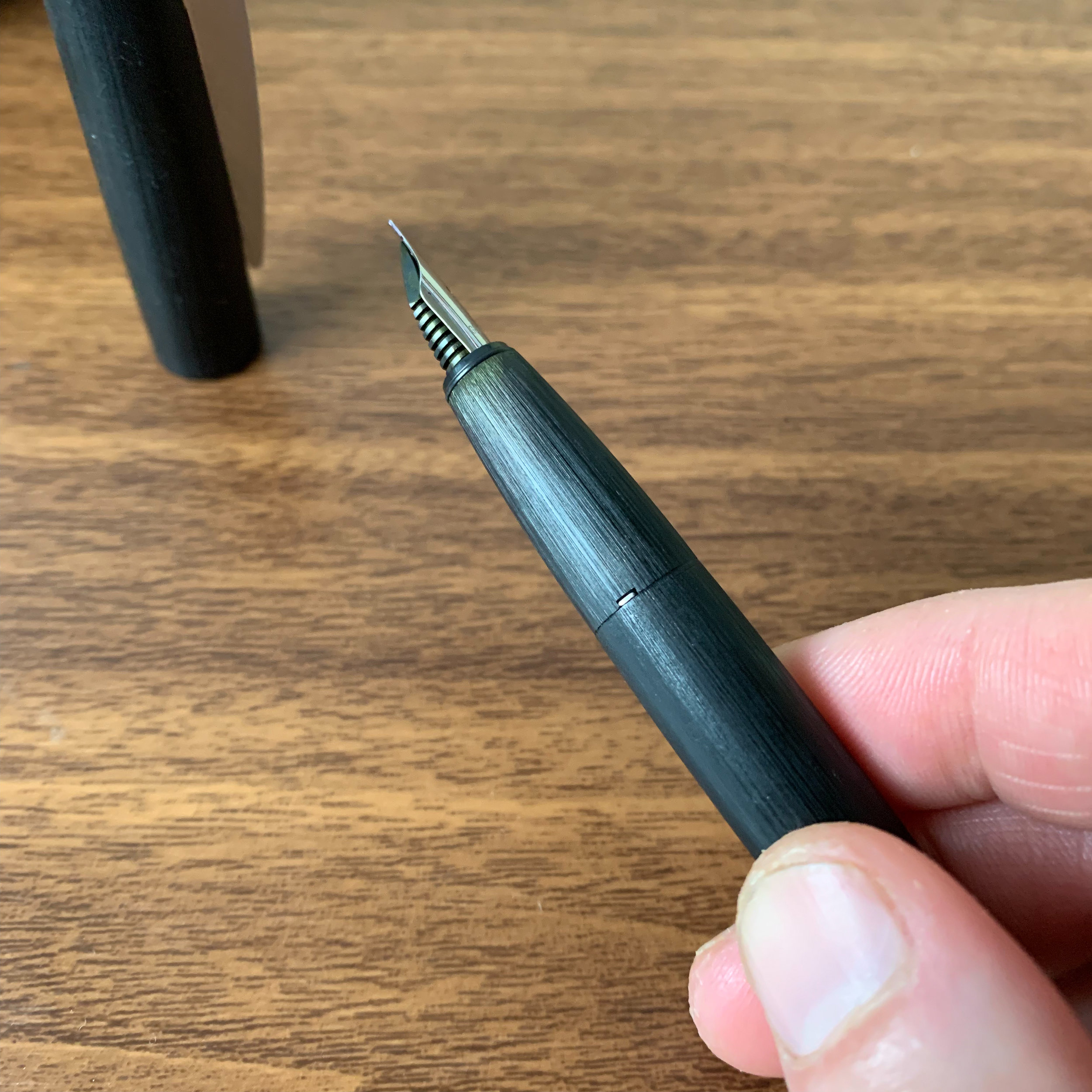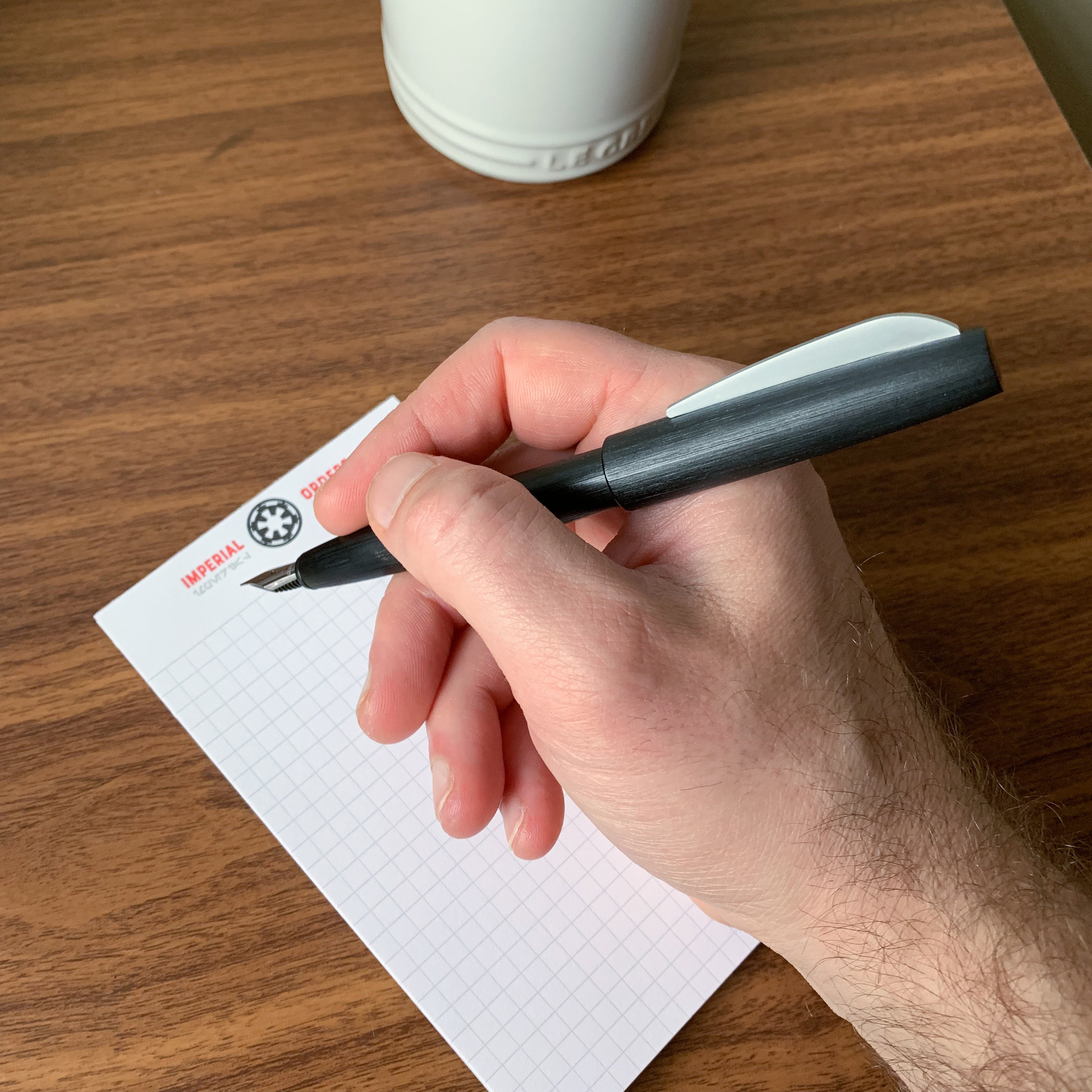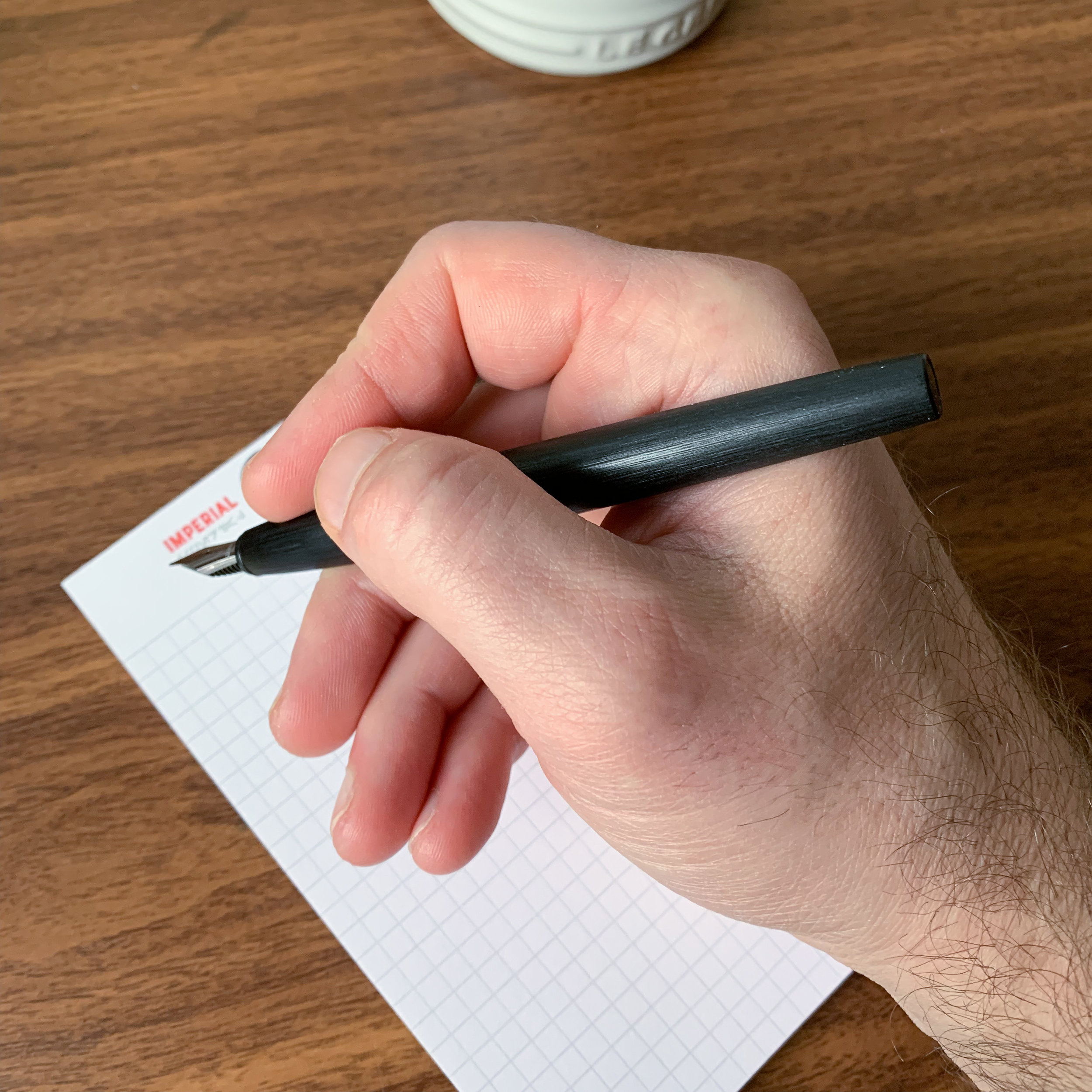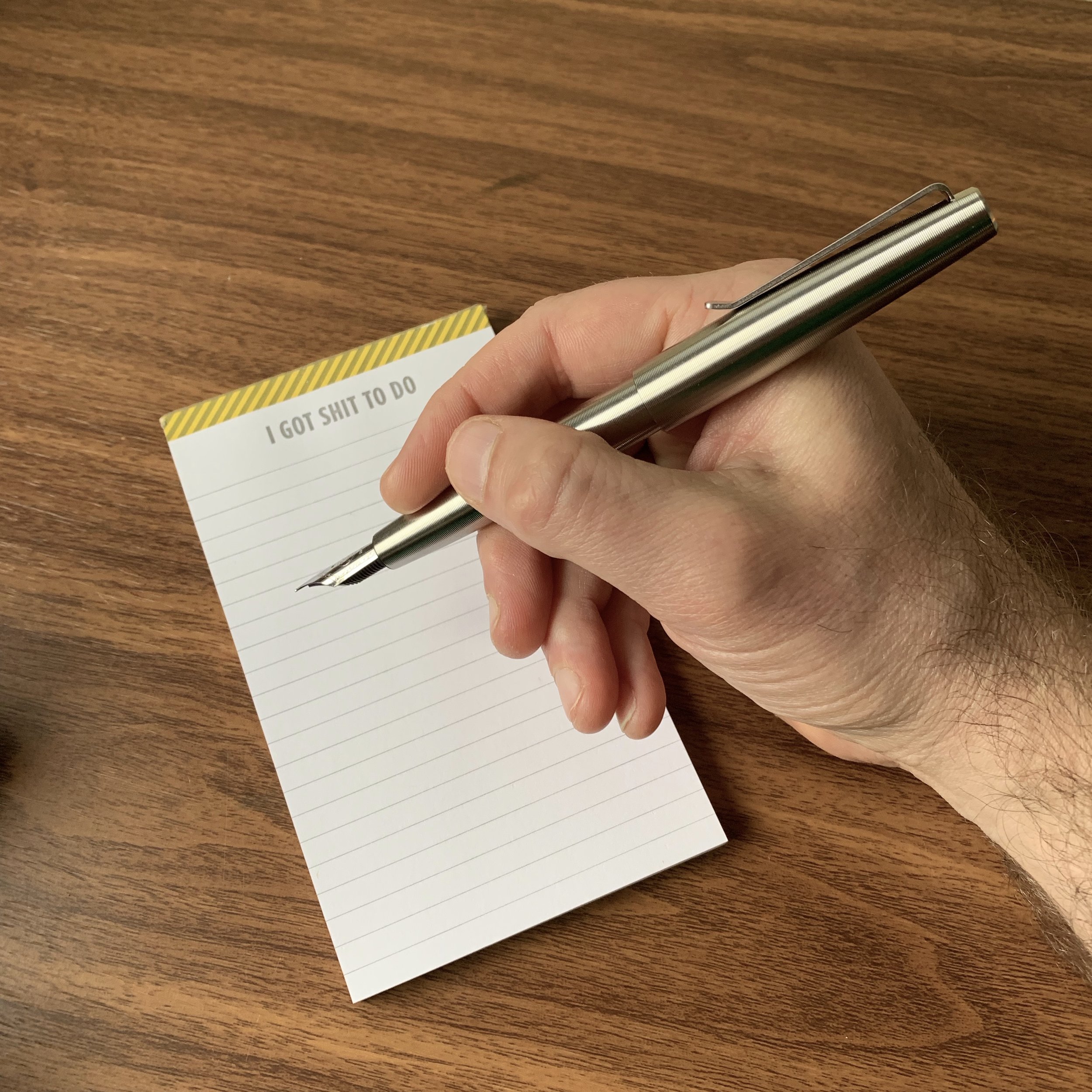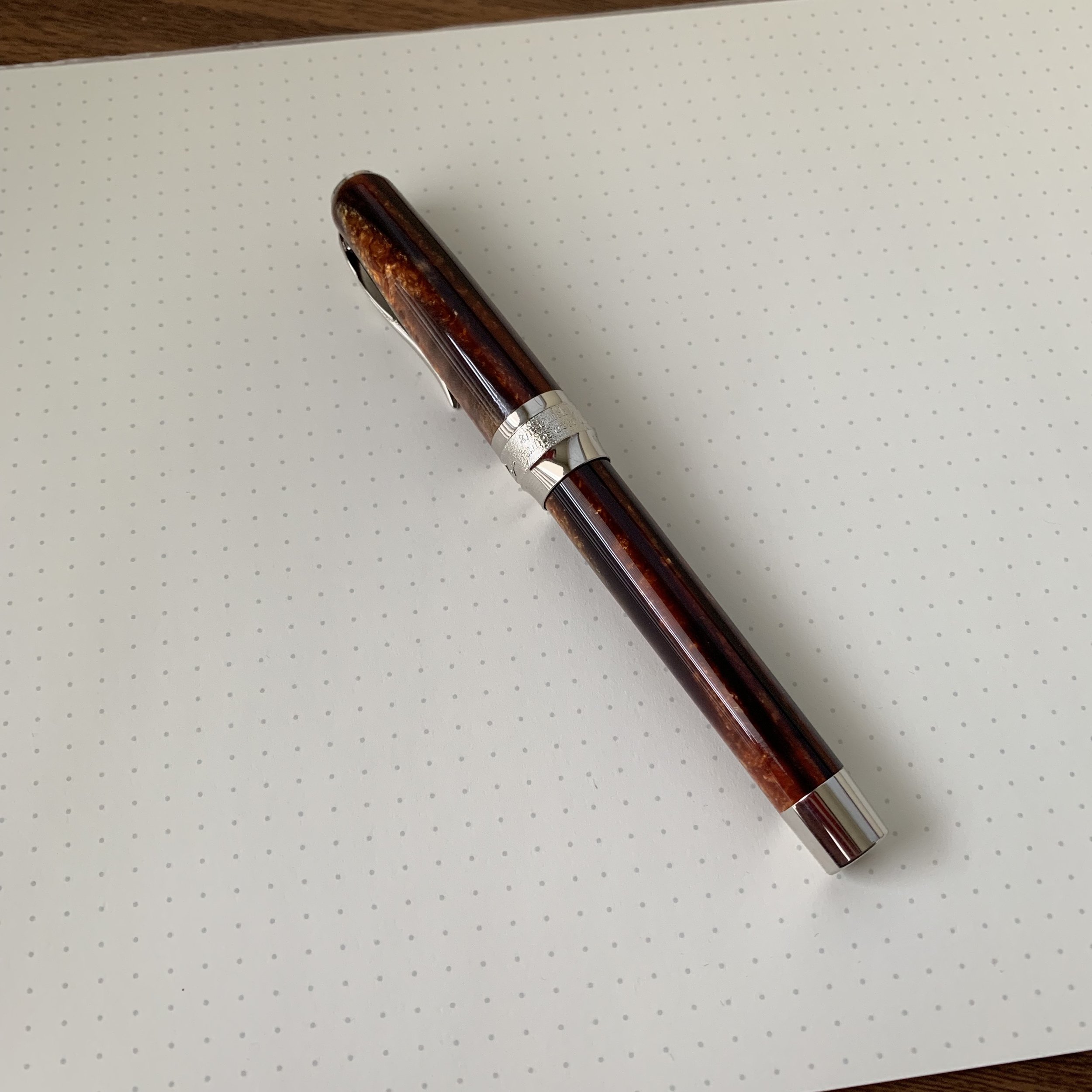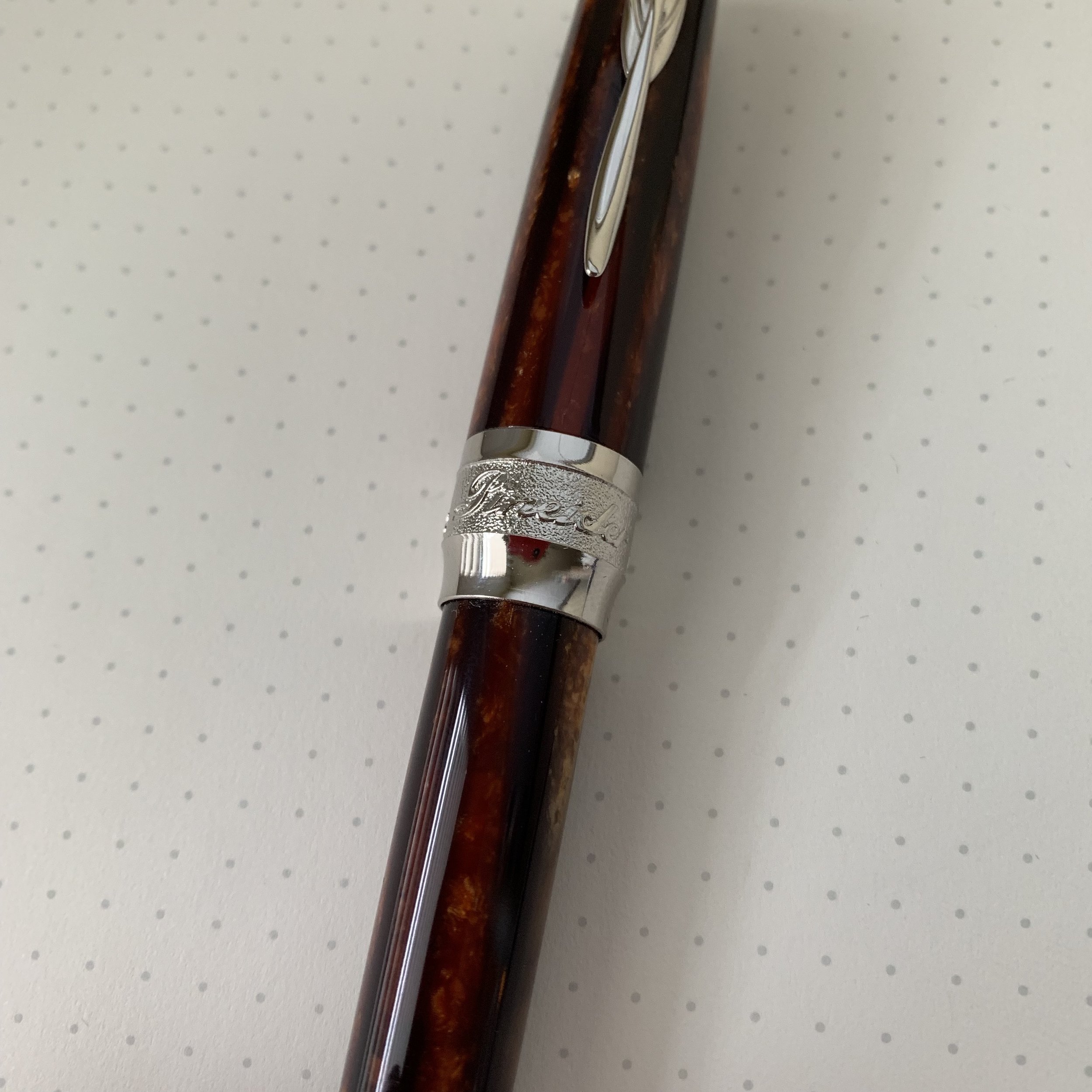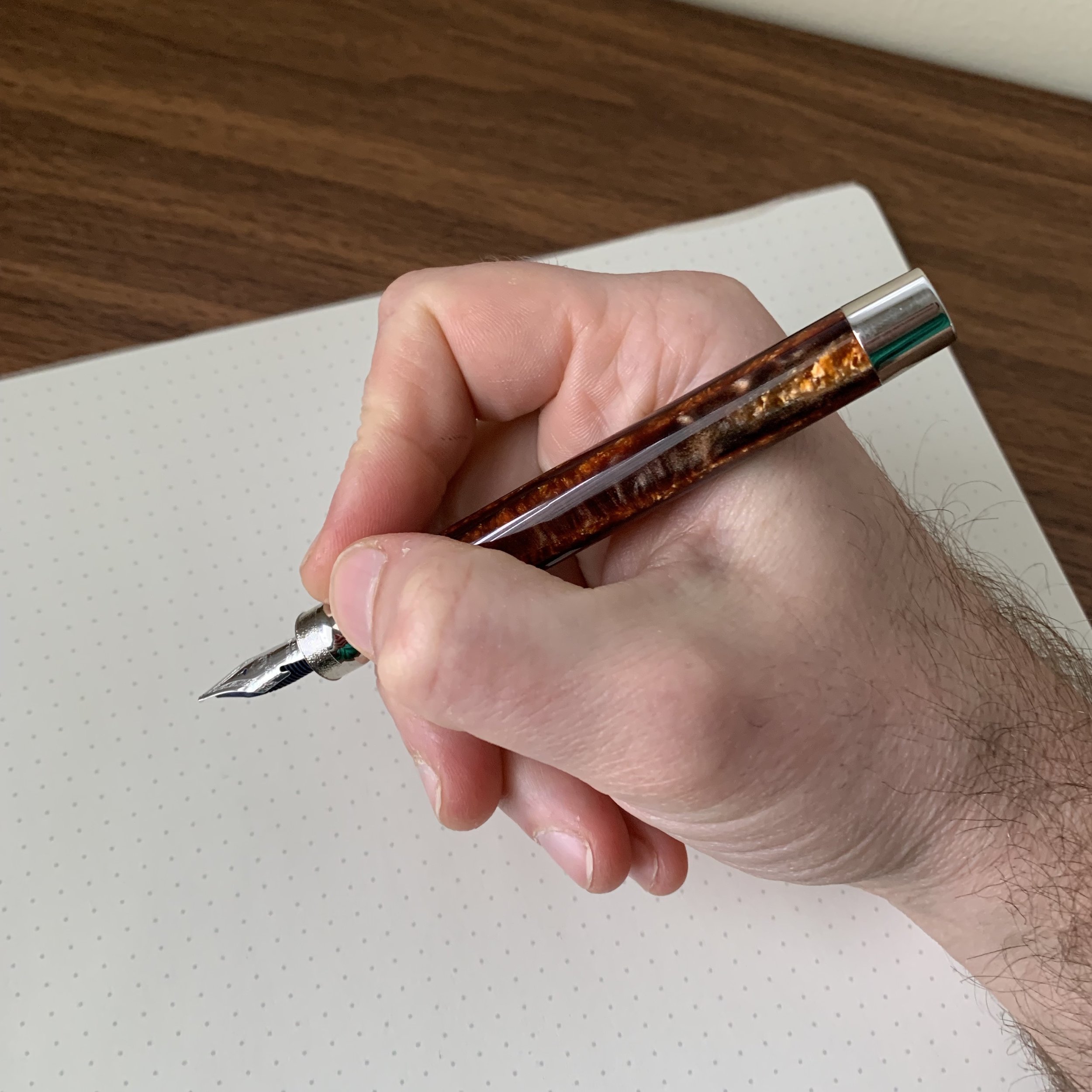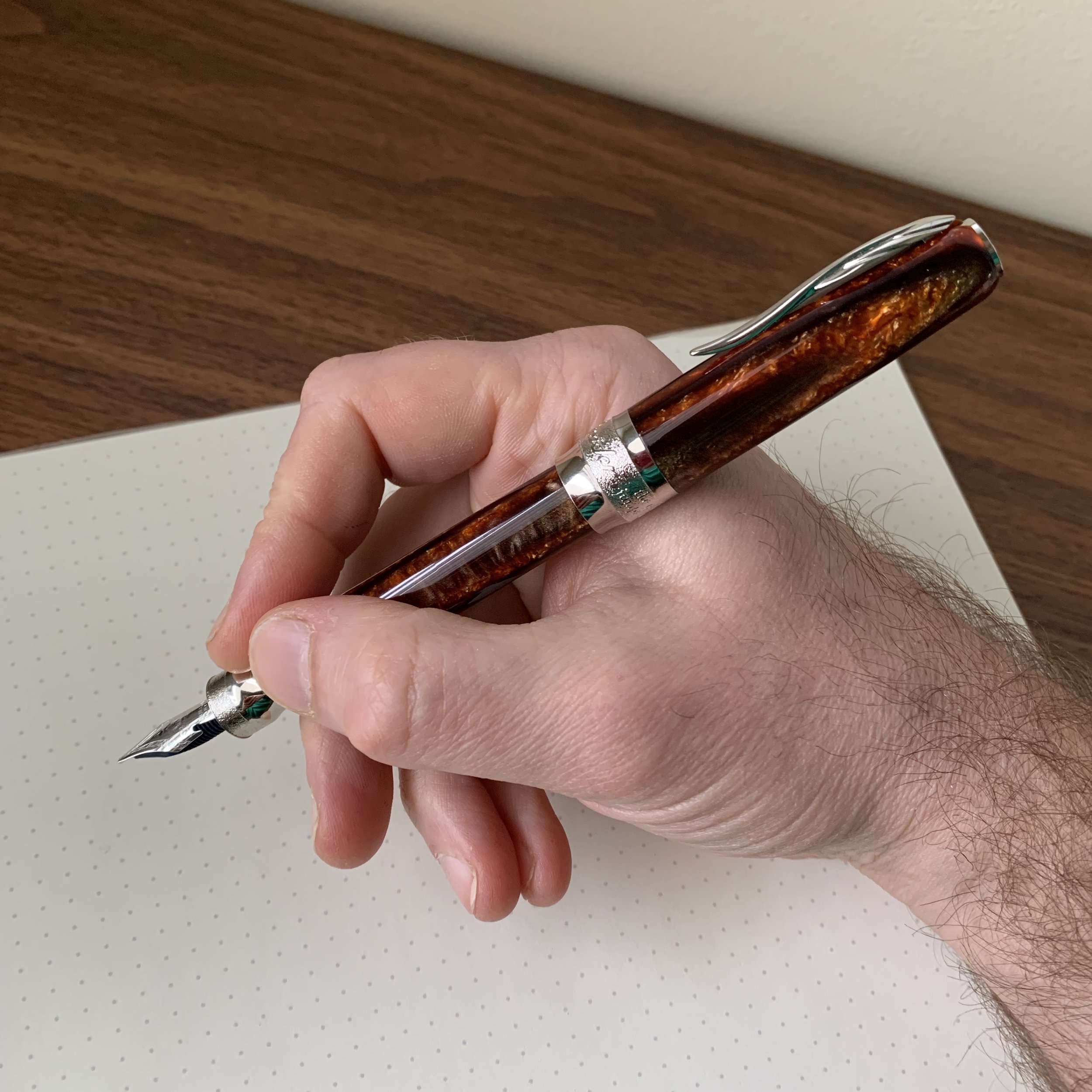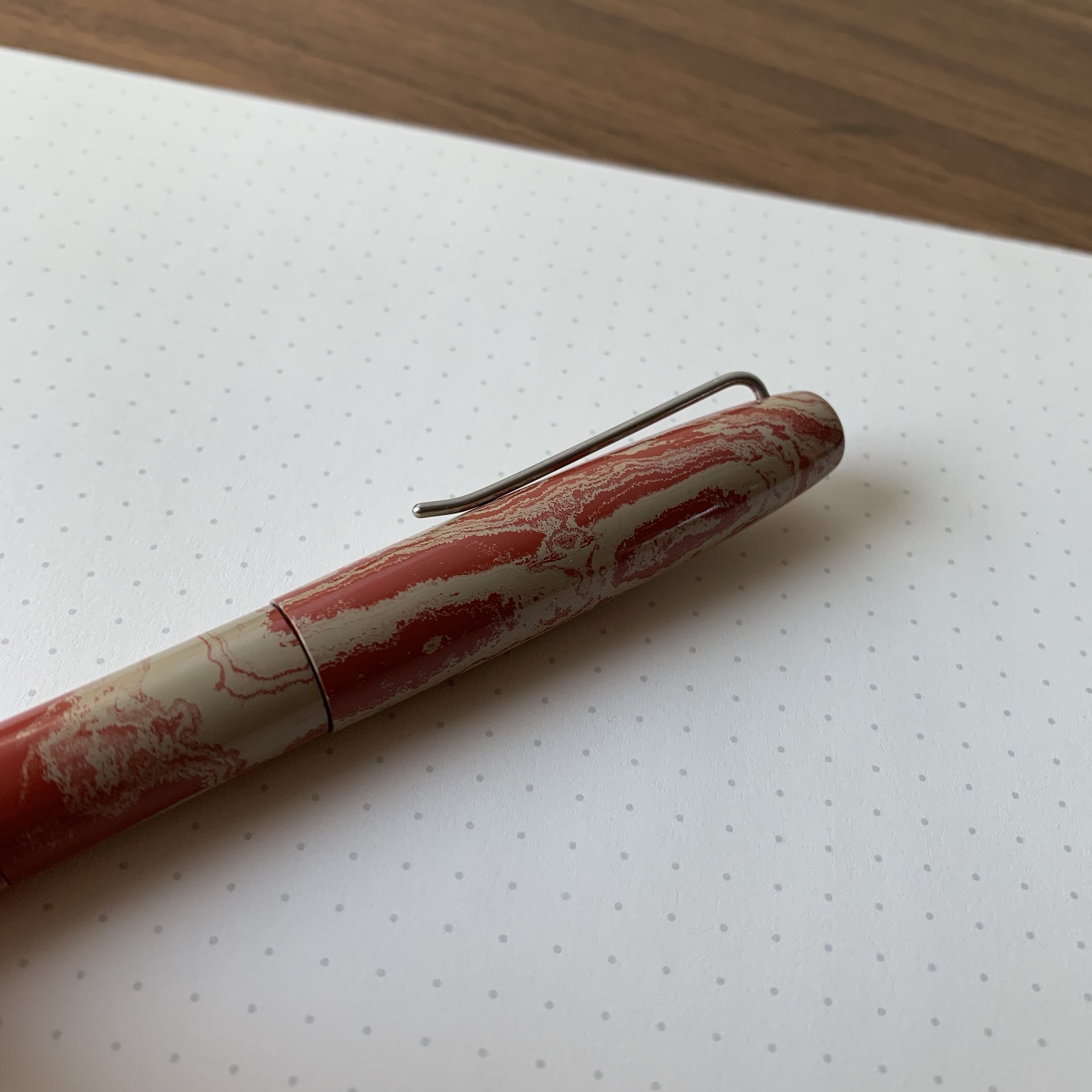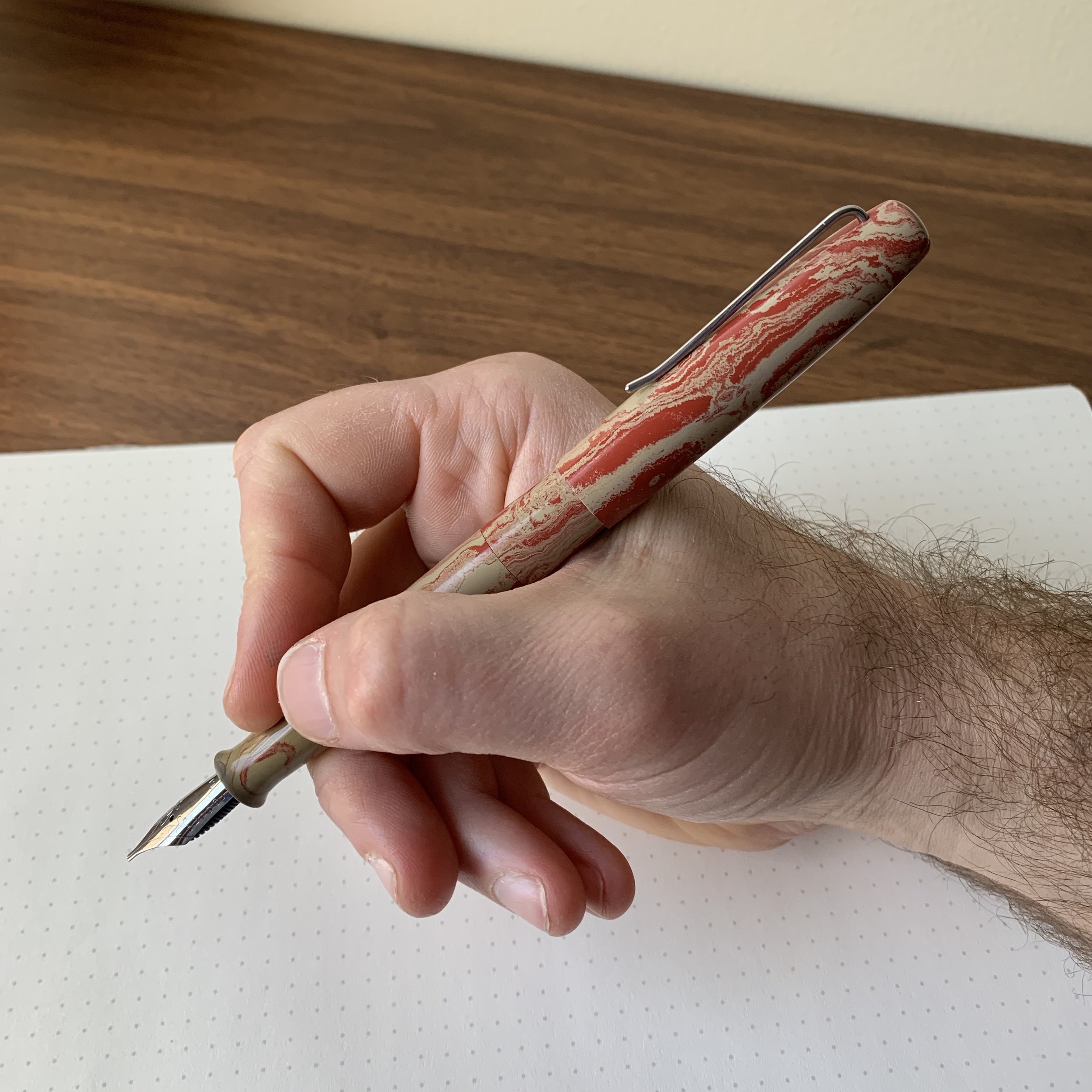I don’t know much about KACO as a Company - what little I do know comes from reading Frank Dong’s (Frank Underwater) series of articles on the best Chinese fountain pens on the market, many of which not only good writers, but extremely inexpensive. According to Frank, KACO is based in Shanghai and is a relatively longstanding stationery manufacturer known for their gel pens. I must say that they make a mean fountain pen as well.
KACO makes three fountain pens that are readily accessible in the U.S., through either Amazon or eBay: the KACO Sky/Sky II, the Retro, and the Edge. (New models are appearing every day as KACO expands its offerings, but these three have received the most attention so far.) While I’ve owned a KACO Sky the longest, my personal favorite thus far is the KACO Edge: a funky looking Makrolon fountain pen with a “blade” clip (hence the name).
KACO’s packaging looks clean and sophisticated, while still remaining appropriate to the price-point of the pen.
For those unfamiliar with the name “Makrolon,” it refers to a polycarbonate material known for its strength and light weight. Most notably, Lamy has manufactured it’s iconic “Lamy 2000” pen from Makrolon since the 1960s, but for some reason other manufacturers have shied away. Tactile Turn featured the material in its initial run of Gist fountain pens, but apparently had trouble sourcing quality raw material and ended up substituting Delrin, a durable plastic with a similar aesthetic.
Brushed Makrolon (polycarbonate) is comfortable to hold and may offer a bit more grip than stainless steel.
So what do I like about the KACO Edge (besides the price point)? Several things spring to mind:
The Brushed Finish. One of the things I love about the Lamy 2000 is that the finish is brushed, not just matte, and the KACO Edge incorporates that same technique. I wish more pen manufacturers would explore this technique, as it provides a comfortable, secure gripping surface.
Makrolon Grip Section. If you’ve previously passed on the Lamy 2000 because of it’s metal grip section, but appreciate the overall look of the Makrolon pen, the KACO Edge offers you an all-Makrolon alternative. While I ultimately prefer the brushed metal grip on the Lamy 2000, I’ve found the Edge to be a very comfortable pen to use as well.
Good Balance and Securely Posting Cap. The KACO Edge is well-balanced and comfortable to write with either posted or unposted. The cap closure uses small metal teeth (like the Lamy), which provides a secure friction fit, with the cap posting securely as well.
Schmidt Nib. By far the riskiest proposition for most inexpensive fountain pens is the nib, which can be maddeningly inconsistent from pen to pen. I’ve written with two or three KACO Edge fountain pens, and all three feature a smooth-writing Schmidt nib that has worked well every time. The fact that the pen uses a German stainless steel nib is what sets this pen apart from a $3 Jinhao, and it’s easily worth paying the (relatively small) premium.
General Quality Control. While there will be some minor quality control issues at any price point - and especially as you move towards the lower end of the spectrum - I’ve found the quality of KACO pens to be surprisingly consistent. As I noted above, I own three KACO pens, and have tried many more lent by friends, and all of them write very well.
The KACO Edge features a stock Schmidt Nib that is quite a nice writer.
Like any good German steel nib, the Schmidt “EF” writes a broader line that you would expect from an “extra fine” nib. It’s more like a standard fine, or even some mediums. (The “Imperial Orders” pad is another Skylab Letterpress creation, available from either Skylab directly or from the Well-Appointed Desk shop!)
A Note on Design: I generally dislike pens that are blatant copies of something else, and in my opinion, the KACO Edge borrows from the Lamy 2000’s design aesthetic without ripping it off. Other than the combination of a Makrolon pen body and a brushed metal cap, these pens look nothing alike, and behave differently in terms of performance, so the Edge shouldn’t be dismissed as “just another knockoff.” The “blade clip” is actually quite distinctive, and will be something that people either love or hate. One potential issue with this pen is that it can be difficult to clip to thicker fabrics or into pen cases, as the clip isn’t springy at all.
Takeaways and Where to Buy
The KACO Edge has impressed me so far, and I’ve also had positive experiences with my KACO Sky and KACO Retro fountain pens. Look for additional reviews to follow. You certainly can’t argue with the price point of any of these pens (generally the sub-$20 category), which punch well above their weight in terms of design, components, and overall writing experience. I would grade the KACO Edge as the best of the bunch, due to the materials used, manufacturing quality, and the fact that the pen sports a reliable Schmidt nib.
As noted, you can easily acquire the KACO Edge via Amazon, which is how I purchased the pen pictured here. Most KACO products are Prime-eligible (at least as of the time of this review), meaning that they will be in your hands a couple of days after placing your order, if not the same day. Note that the KACO Edge does not ship with a converter in the box, so if you’re interested in using bottled ink with this pen, you will need to purchase a Schmidt converter separately, or you can sometimes find sellers who will throw in a KACO-branded converter.
Follow-Up and Editor’s Note
Despite the overall good quality of both Wing Sung and KACO pens, I've experienced cap cracks with both, which I accept as par for the course in this price bracket. At sub-$20, you're going to have to accept a lower level of manufacturing quality control on the front end, and what becomes important is the extent to which the retailers and manufacturers will support their customers on the back end. In the case of the KACO Edge, I was warned by a reader to be on the lookout for cap cracks, and a week or so after finalizing my review, I found one. I reached out to the Amazon Seller (who I assume is affiliated with KACO), who literally responded within 5 minutes offering to mail me a new cap, and requesting that I send her a photo of the crack with details of its location so she could share with the factory. I was quite happy with this level of service!
Disclaimer: This post contains links to paid sponsors and affiliates. I purchased the pen featured in this review with my own funds, for my own use.
